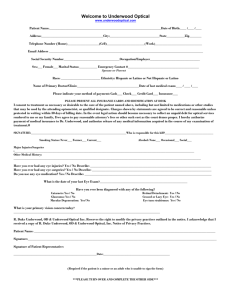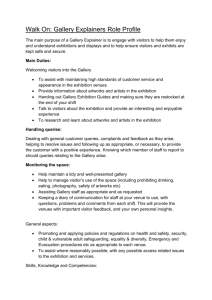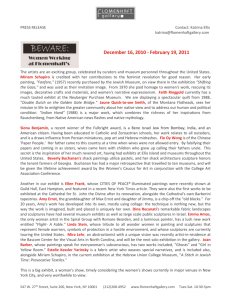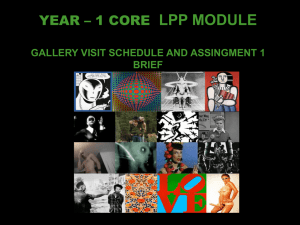Leon Underwood - Pallant House Gallery
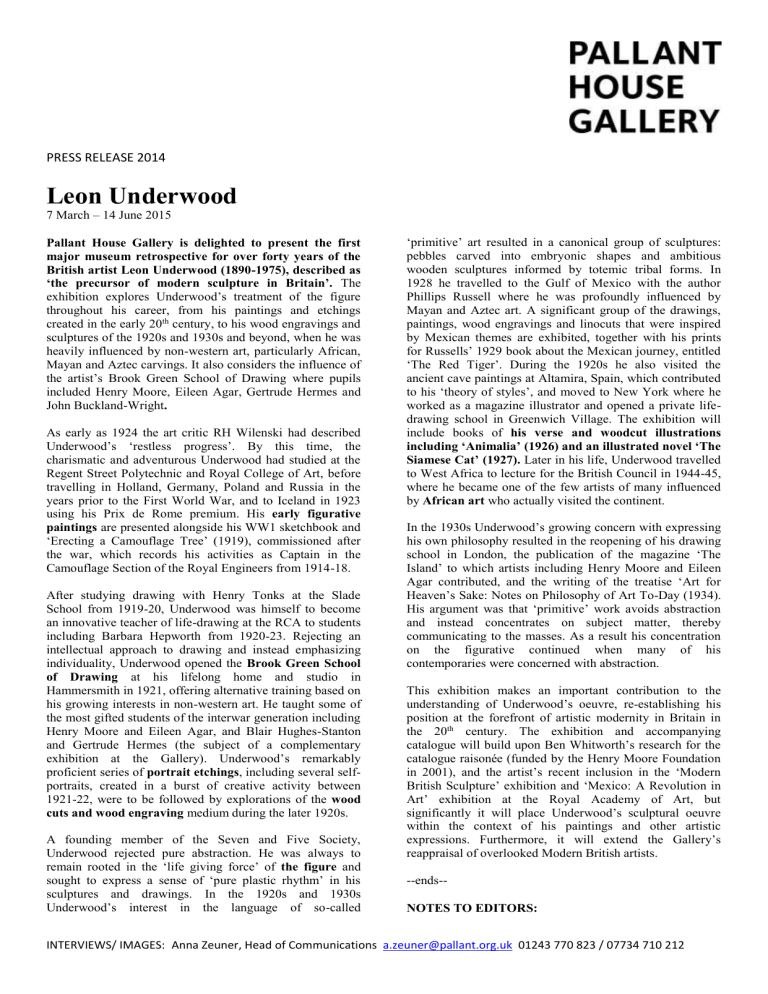
PRESS RELEASE 2014
Leon Underwood
7 March – 14 June 2015
Pallant House Gallery is delighted to present the first major museum retrospective for over forty years of the
British artist Leon Underwood (1890-1975), described as
‘the precursor of modern sculpture in Britain’.
The exhibition explores Underwood’s treatment of the figure throughout his career, from his paintings and etchings created in the early 20 th century, to his wood engravings and sculptures of the 1920s and 1930s and beyond, when he was heavily influenced by non-western art, particularly African,
Mayan and Aztec carvings. It also considers the influence of the artist’s Brook Green School of Drawing where pupils included Henry Moore, Eileen Agar, Gertrude Hermes and
John Buckland-Wright .
As early as 1924 the art critic RH Wilenski had described
Underwood’s ‘restless progress’. By this time, the charismatic and adventurous Underwood had studied at the
Regent Street Polytechnic and Royal College of Art, before travelling in Holland, Germany, Poland and Russia in the years prior to the First World War, and to Iceland in 1923 using his Prix de Rome premium. His early figurative paintings are presented alongside his WW1 sketchbook and
‘Erecting a Camouflage Tree’ (1919), commissioned after the war, which records his activities as Captain in the
Camouflage Section of the Royal Engineers from 1914-18.
After studying drawing with Henry Tonks at the Slade
School from 1919-20, Underwood was himself to become an innovative teacher of life-drawing at the RCA to students including Barbara Hepworth from 1920-23. Rejecting an intellectual approach to drawing and instead emphasizing individuality, Underwood opened the Brook Green School of Drawing at his lifelong home and studio in
Hammersmith in 1921, offering alternative training based on his growing interests in non-western art. He taught some of the most gifted students of the interwar generation including
Henry Moore and Eileen Agar, and Blair Hughes-Stanton and Gertrude Hermes (the subject of a complementary exhibition at the Gallery). Underwood’s remarkably proficient series of portrait etchings , including several selfportraits, created in a burst of creative activity between
1921-22, were to be followed by explorations of the wood cuts and wood engraving medium during the later 1920s.
A founding member of the Seven and Five Society,
Underwood rejected pure abstraction. He was always to remain rooted in the ‘life giving force’ of the figure and sought to express a sense of ‘pure plastic rhythm’ in his sculptures and drawings. In the 1920s and 1930s
Underwood’s interest in the language of so-called
‘primitive’ art resulted in a canonical group of sculptures: pebbles carved into embryonic shapes and ambitious wooden sculptures informed by totemic tribal forms. In
1928 he travelled to the Gulf of Mexico with the author
Phillips Russell where he was profoundly influenced by
Mayan and Aztec art. A significant group of the drawings, paintings, wood engravings and linocuts that were inspired by Mexican themes are exhibited, together with his prints for Russells’ 1929 book about the Mexican journey, entitled
‘The Red Tiger’. During the 1920s he also visited the ancient cave paintings at Altamira, Spain, which contributed to his ‘theory of styles’, and moved to New York where he worked as a magazine illustrator and opened a private lifedrawing school in Greenwich Village. The exhibition will include books of his verse and woodcut illustrations including ‘Animalia’ (1926) and an illustrated novel ‘The
Siamese Cat’ (1927). Later in his life, Underwood travelled to West Africa to lecture for the British Council in 1944-45, where he became one of the few artists of many influenced by African art who actually visited the continent.
In the 1930s Underwood’s growing concern with expressing his own philosophy resulted in the reopening of his drawing school in London, the publication of the magazine ‘The
Island’ to which artists including Henry Moore and Eileen
Agar contributed, and the writing of the treatise ‘Art for
Heaven’s Sake: Notes on Philosophy of Art To-Day (1934).
His argument was that ‘primitive’ work avoids abstraction and instead concentrates on subject matter, thereby communicating to the masses. As a result his concentration on the figurative continued when many of his contemporaries were concerned with abstraction.
This exhibition makes an important contribution to the understanding of Underwood’s oeuvre, re-establishing his position at the forefront of artistic modernity in Britain in the 20 th century. The exhibition and accompanying catalogue will build upon Ben Whitworth’s research for the catalogue raisonée (funded by the Henry Moore Foundation in 2001), and the artist’s recent inclusion in the ‘Modern
British Sculpture’ exhibition and ‘Mexico: A Revolution in
Art’ exhibition at the Royal Academy of Art, but significantly it will place Underwood’s sculptural oeuvre within the context of his paintings and other artistic expressions. Furthermore, it will extend the Gallery’s reappraisal of overlooked Modern British artists.
--ends--
NOTES TO EDITORS:
INTERVIEWS/ IMAGES: Anna Zeuner, Head of Communications a.zeuner@pallant.org.uk
01243 770 823 / 07734 710 212
PRESS RELEASE 2014
Alongside the exhibition there will be complementary displays of the Modernist architect Joseph Emberton
(Underwood’s friend and colleague on a number of projects) and the prints of Gertrude Hermes and Blair Hughes-Stanton who met at Underwood’s Brook Green School. The exhibition will be accompanied by a fully illustrated catalogue and a programme of talks, events and workshops, including a new learning resource for schools.
The exhibition is curated by Simon Martin, Artistic Director of Pallant House Gallery, who has written extensively on
Modern British Art. He has written catalogues and monographs of Edward Burra, Eduardo Paolozzi, Colin Self and John Tunnard.
About Pallant House Gallery:
Pallant House Gallery is a unique combination of an historic
Queen Anne townhouse and contemporary extension, housing one of the best collections of Modern British art in the country, including important works by Auerbach, Blake,
Caulfield, Freud, Hodgkin, Nicholson, Paolozzi, Piper and
Sutherland. Widely acclaimed for its innovative temporary exhibitions and exemplary Learning and Community
Programme, the Gallery has won numerous awards since re– opening in 2006 including the Gulbenkian Prize (now The
Art Fund Prize), the largest for arts and cultural organisations in the country.
INTERVIEWS/ IMAGES: Anna Zeuner, Head of Communications a.zeuner@pallant.org.uk
01243 770 823 / 07734 710 212
